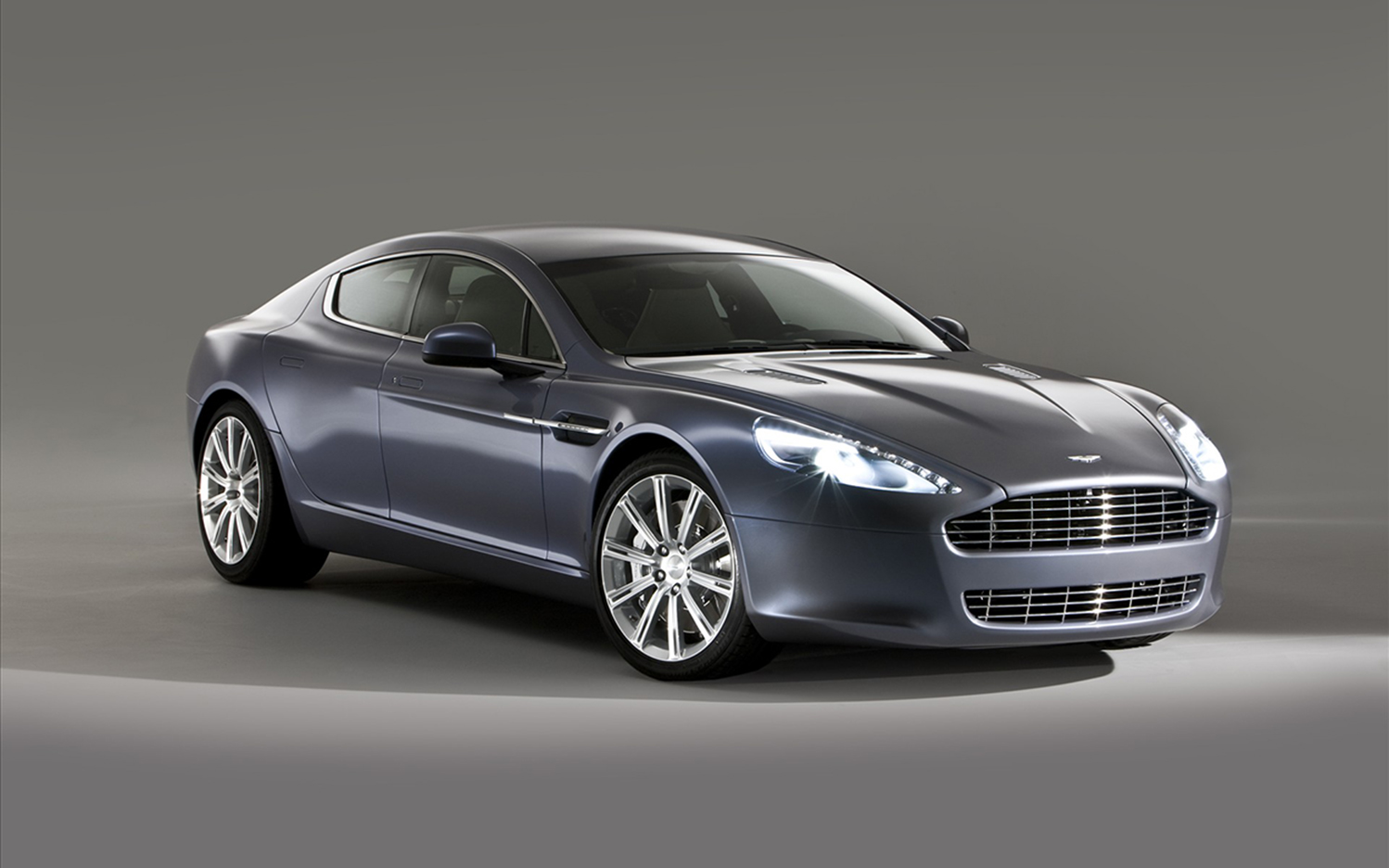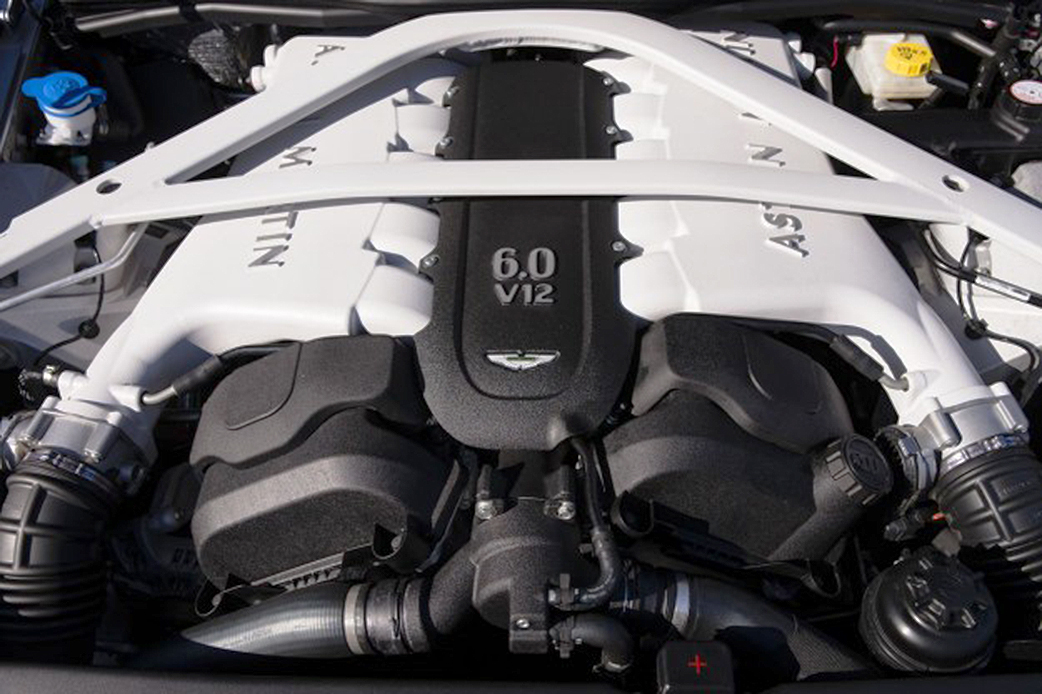Aston Martin Rapide review (2010-2013)
Just how practical can Aston's four-door, four-seat saloon grand tourer be?
What is the Aston Martin Rapide?
The idea of an Aston designed to be practical seems as relevant as pondering roof-rack options for the Virage coupe; this four-door saloon, however, has obvious merits, and is indeed (slightly) more practical car than the Vantage, Virage, DBS and the rest (not least by having four seats) as well as being a stunningly beautiful four-door saloon. Although this may not sound particularly James Bond-like, it’s nonetheless the case that upon first setting eyes on the sensuously beautiful Rapide in the metal, most people conclude that it is probably the slinkiest saloon anywhere in the world.
It’s based on the Aston VH platform that is common to all of the brand’s contemporary GTs, but is unique in being more than a foot longer than its siblings, in order to accommodate the two decent rear seats.
While it may be the most beautiful car of its type, it does have its rivals, in the guise of Maserati’s exotically handsome Quattroporte (perhaps the closest), and Porsche’s rather more awkward-looking Panamera, but neither delivers quite as wonderful a blend of style, performance and general indulgence.
The standard Rapide costs significantly more than these machines but it outpoints both for subtly muscular glamour.
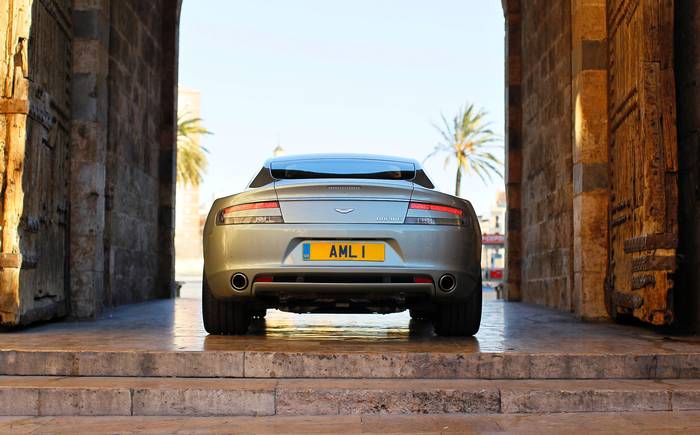
The drive
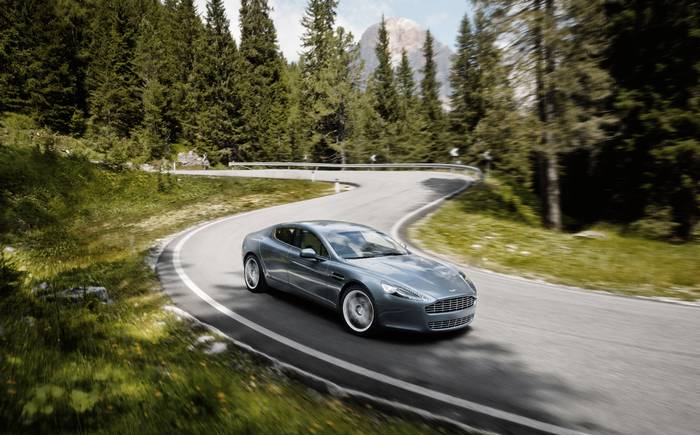
The Aston Martin Rapide comes in only one mechanical flavour, its 5.9-litre V12 serving a 183mph top speed, the 0-62 dash in 5.2 seconds — and the promise of frequent chances to flaunt your beast on the nation’s forecourts while it drains your wallet.
The Rapide offers close to supercar performance and there’s handling to match, the big Aston essentially a four-door version of the DB9. In fact, the suspension has been softened off slightly for its passenger-carrying role, but be in no doubt that this car is fast, agile and indulgently entertaining. Parking may be an embarrassingly inelegant procedure however, because of its size.
The interior
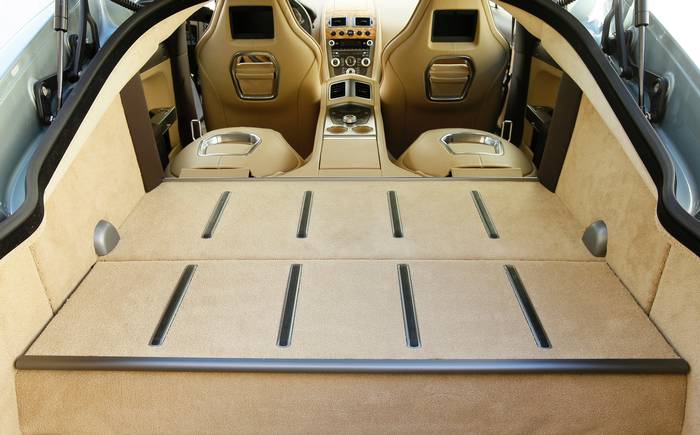
It has four doors and it’s not short of length, but the Rapide’s rear cabin turns out to be a tight fit for anyone banished to its sumptuous seats. You don’t quite feel that you’re entombed back there, but you certainly have to insert yourself carefully into its human-sized slots. Insert, because the Rapide’s doors are not big. Consolation comes from the realisation that you’re now on board an Aston, and that almost everything your body sits (very) close to is leather. But if you’re more than 6ft tall, you won’t want to spend long back here, expensive leather aroma or not.
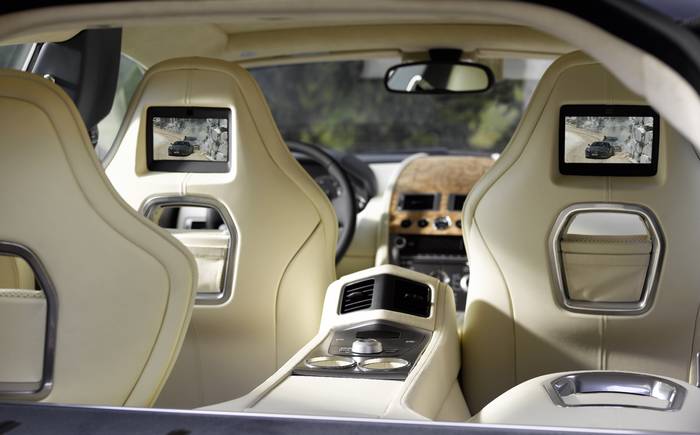
Up front there’s plenty of room, although those familiar with the rest of Aston’s range will be disappointed to see that the Rapide’s dashboard follows an all-too-familiar format, right down to a set of watch-like instrument dials that are harder to read than a train timetable at midnight. And while we’re carping, the Rapide’s boot is of the “I’ll-send-my-luggage-ahead” variety if you plan on holidaying four-up. But for all that, the cabin’s lavish furnishings and flowing architecture make occupying it a memorable experience.
What to look out for when buying a used Aston Martin Rapide
As many Rapides are still covered by their original warranty, and virtually all examples are still within the official dealer network, any glitches should have been quietly dealt with by Aston’s agents. We haven’t been able to pinpoint any endemic fault patterns as such, but the odd isolated incident of electrical problems, tyre-pressure monitoring system maladies and creaking seats seems to be as bad as it gets.
Although the DB9 has been affected by a few recalls, and the Rapide borrows heavily from that model, it has so far only been caught up in one recall issue, which pertains to a throttle pedal fault on some cars built in 2012 and early 2013.
Other than that, we can only reiterate what we said for the Aston Martin Virage models:
“Looking to the mechanically similar DB9 shows that the mechanicals are not faultlessly reliable, but neither are they roguish, and in the years since this model’s introduction Aston has been able to iron out any obvious glitches. This, together with the fact that most examples cover modest mileages, means you can expect most examples to be pretty trouble-free.
“The Virage is not the last word in state-of-the-art design, but on the positive side that also means it uses tried and tested mechanicals; the V12 engine is the long-serving unit of the Vantage model, and the automatic gearbox is the work of leading German transmission specialist ZF, so neither should hold any dark secrets, providing proper maintenance has been exercised – and at this end of the market that’s almost always the case.”
The one to buy
Factfile
- Engine:
- 5935cc, V12
- Power:
- 470bhp @ 6000rpm
- Torque:
- 443 lb ft @ 5000rpm
- Transmission:
- 6-speed automatic
- Acceleration:
- 0-62mph in 5.2sec
- Top Speed:
- 183mph
- Fuel
- 19mpg
- CO2:
- 355g/km
- Road Tax Band:
- M
- Dimensions:
- L 5019mm, W 1929mm, H 1360mm


